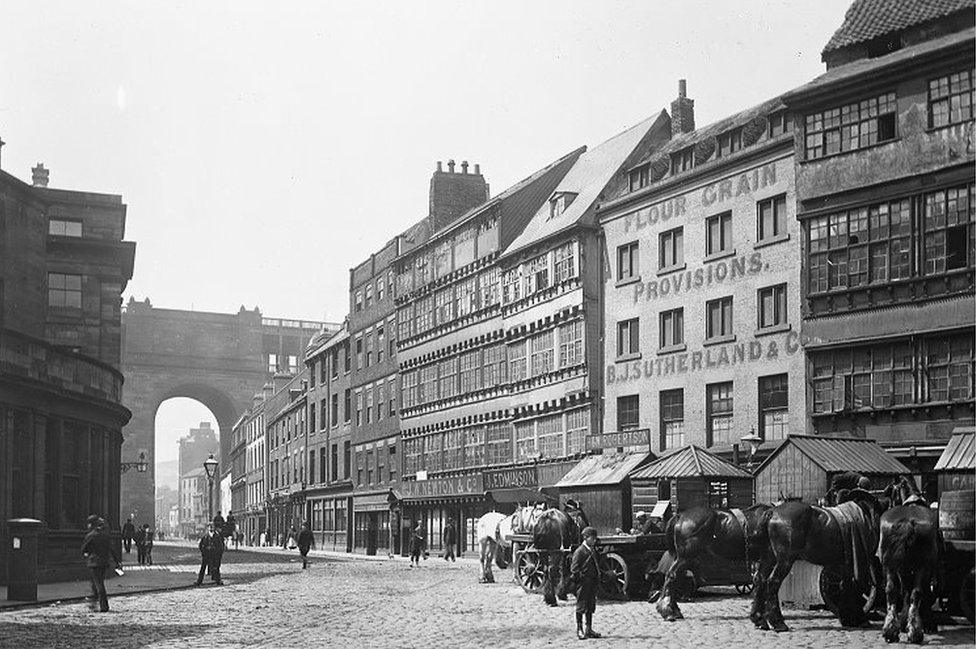193
Here’s a comprehensive list of historical facts about Newcastle upon Tyne, spanning its Roman origins, medieval development, industrial significance, and cultural heritage:
🏛️ Ancient and Roman Era
- Founded as a Roman fort: The Romans built a fort called Pons Aelius around AD 122, named after the Emperor Hadrian (whose family name was Aelius).
- Hadrian’s Wall: Newcastle was a key location on Hadrian’s Wall, the northern frontier of the Roman Empire, built to keep out the tribes of what is now Scotland.
- Strategic river crossing: The Romans constructed a bridge across the River Tyne — the reason the fort was built in this exact location.
🏰 Medieval Period
- Name origin – “New Castle”: In 1080, the Normans built a wooden motte-and-bailey castle, giving rise to the city’s name: “New Castle upon Tyne.”
- Castle Keep built in stone: The current Castle Keep was constructed by Henry II between 1172 and 1177, and it still stands today.
- Black Gate added: The fortified Black Gate was added to the castle complex in the 13th century during the reign of Henry III.
- Walled town: By the 14th century, Newcastle was fully walled and fortified to protect against Scottish raids.
- Royalist stronghold: During the English Civil War (1642–1651), Newcastle was a Royalist city and was besieged and captured by the Scottish Covenanters in 1644.
⚓ Trade and Industrial Growth
- Coal trade: By the 13th century, Newcastle had become a major exporter of coal. The term “carrying coals to Newcastle” means doing something unnecessary or redundant.
- Merchant Guilds: Newcastle’s medieval economy was dominated by powerful guilds such as the Company of Merchant Adventurers.
- Newcastle’s port: It became one of the most important ports in the country, especially in coal, shipbuilding, and salt.
- Host of the Great Fire (1854): A massive explosion and fire devastated the quayside and parts of the city. It killed at least 53 people and injured over 400.
- Lead, glass, and armaments: By the 17th and 18th centuries, Newcastle was also known for lead production, glass-making, and cannon and armaments.
🏗️ 19th-Century Innovation and Expansion
- Railway hub: Newcastle became a key part of Britain’s growing railway network, including the High Level Bridge (1849), designed by Robert Stephenson.
- Industrial revolution: It flourished with coal mining, shipbuilding, and engineering industries. Many innovations in locomotive design and construction came from Newcastle.
- Home of George Stephenson: The “Father of Railways,” George Stephenson, worked in Newcastle. His son Robert Stephenson designed many famous railways and bridges.
- First electric light bulb: Joseph Swan, from Newcastle, independently invented the incandescent light bulb in the 1870s, around the same time as Thomas Edison.
- The Lit & Phil: The Literary and Philosophical Society of Newcastle upon Tyne, founded in 1793, is the largest independent library outside London and a hub of intellectual and scientific activity.
🎓 Civic and Cultural Development
- Newcastle University: Originating as a medical school in 1834, Newcastle University became an independent institution in 1963.
- Grainger Town and Grey’s Monument: The city centre was transformed in the 1830s by developer Richard Grainger and architect John Dobson, creating the grand neoclassical streets around Grey Street.
- Grey’s Monument (1838): Erected in honour of Earl Grey, the Prime Minister behind the Great Reform Act of 1832.
- Theatre Royal: One of the finest theatres in the UK, originally opened in 1788, rebuilt in 1837, and a centre for drama and culture ever since.
🧱 Modern Development and Legacy
- Newcastle United Football Club: Founded in 1892, the team plays at St James’ Park, which has been a central part of the city’s identity for over a century.
- Tyne Bridge (1928): An iconic structure linking Newcastle and Gateshead, and a model for the Sydney Harbour Bridge in Australia.
- Great North Run: The world’s largest half-marathon, first held in 1981, starts in Newcastle and finishes in South Shields.
- Angel of the North: Though located in Gateshead, it’s a symbol of the Tyneside area. Erected in 1998, the sculpture by Antony Gormley is one of the UK’s most famous landmarks.
- Geordie identity: The term “Geordie” is used to describe people from Newcastle and also their distinctive dialect and accent, with theories linking the term to the Jacobite uprisings or loyalty to George I.
🧾 Miscellaneous and Curiosities
- Bessie Surtees House: A fine example of a 16th–17th-century merchant’s townhouse on the Newcastle quayside, where Bessie Surtees famously eloped with John Scott, who later became Lord Chancellor of England.
- Oldest pub: The Old George Inn, dating from 1582, is said to have been visited by King Charles I when he was held prisoner in Newcastle during the Civil War.
- Underground secrets: The city is full of historic tunnels, such as Victoria Tunnel, originally a coal wagonway and later used as an air raid shelter in WWII.
- WWII Bombing: Newcastle was targeted during the Blitz, with significant damage to industrial areas and some parts of the city.

